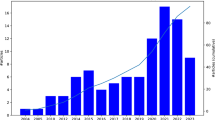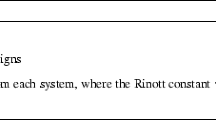Abstract
This paper explores an important aspect of tolerance charting, i.e. tolerance chart balancing. A mathematical model for tolerance chart balancing, based on the “rooted tree” representation technique, has been established. The mathematical model, which represents a resource allocation problem, is then solved by using the linear programming approach. An example is used to illustrate the method. A comparison between the results generated by the proposed method and the manual method is also included.
Similar content being viewed by others
References
K. Whybrew, G. A. Britton, G. F. Robinson and Y. Sermsuti-Anuwat, “A graph-theoretic approach to tolerance charting,”The International Journal of Advanced Manufacturing Technology,5(2), pp. 175–183, 1990.
R. S. Ahluwalia and A. V. Karolin, “CATC—a computer aided tolerance control system,”Journal of Manufacturing Systems,3(2), pp. 153–160, 1984.
T. Xiaoquig and B. J. Davies, “Computer aided dimensional planning,”International Journal of Production Research,26(2), pp. 283–297, 1988.
D. F. Eary and G. E. Johnson,Process Engineering for Manufacturing, Prentice-Hall, New Jersey, 1962.
Author information
Authors and Affiliations
Rights and permissions
About this article
Cite this article
Ngoi, B.K.A. Applying linear programming to tolerance chart balancing. Int J Adv Manuf Technol 7, 187–192 (1992). https://doi.org/10.1007/BF02601622
Accepted:
Issue Date:
DOI: https://doi.org/10.1007/BF02601622




